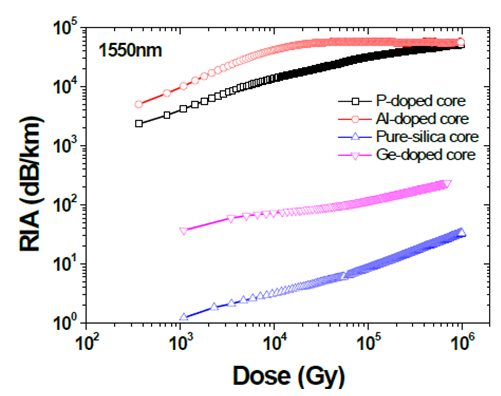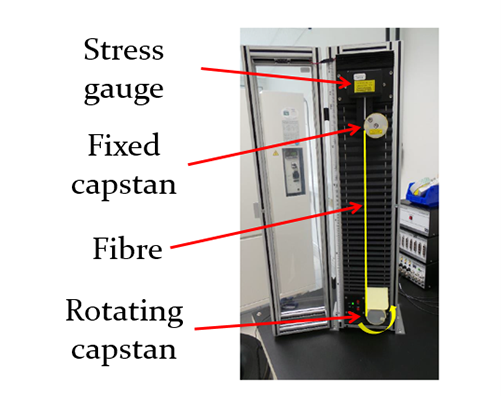LabH6: Optical fibers for sensors in nuclear environment
Related Publications
-
Recent advances in radiation-hardened fiber-based technologies for space applications
Journal of Optics – 1 August 2018
In this topical review, the recent progress on radiation-hardened fiber-based technologies is detailed, focusing on examples for space applications. In the first part of the review, we introduce the operational principles of the various fiber-based technologies considered for use in radiation environments: …
Download -
Radiation Effects on Silica-Based Optical Fibers: Recent Advances and Future Challenges
Illustration of the test bench for the mechanical strength of optical fibers before/after irradiation.
https://ieeexplore.ieee.org/document/6457426 -
Overview of radiation induced point defects in silica-based optical fibers
S. Girard et al., Reviews in Physics (4) 100032, 2019.
https://doi.org/10.1016/j.revip.2019.100032 -
Combined effect of radiation and temperature: towards optical fibers suited to distributed sensing in extreme radiation environments
30th Conference on Radiation and its Effects on Components and Systems (RADECS 2019) – September 2019
Combined effect of radiation and temperature on the response of polyimide coated radiation hardened single-mode fibers is investigated in the context of distributed monitoring of large nuclear infrastructures. Radiation induced attenuation (RIA) is evaluated for doses ranging from 1 to 10 MGy(SiO2) and temperatures up to ~250 °C.
Learn more -
Radiation resistant single-mode fiber with different coatings for sensing in high dose environments
IEEE Transactions on Nuclear Science – 10 December 2018
A radiation single-mode optical fiber has been specifically developed for distributed sensing in harsh environments associated with MGy(SiO2) dose radiation. Different types of coating have been used: acrylate, polyimide, aluminum that allow extending the range of accessible temperatures up to 400°C…
Learn more



